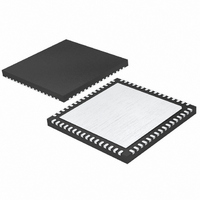LTC2208CUP-14 Linear Technology, LTC2208CUP-14 Datasheet - Page 17

LTC2208CUP-14
Manufacturer Part Number
LTC2208CUP-14
Description
IC ADC 14BIT 130MSPS 64-QFN
Manufacturer
Linear Technology
Datasheet
1.LTC2208CUP-14TR.pdf
(28 pages)
Specifications of LTC2208CUP-14
Number Of Bits
14
Sampling Rate (per Second)
130M
Data Interface
Parallel
Number Of Converters
1
Power Dissipation (max)
1.78W
Voltage Supply Source
Single Supply
Operating Temperature
0°C ~ 70°C
Mounting Type
Surface Mount
Package / Case
64-WFQFN, Exposed Pad
Lead Free Status / RoHS Status
Contains lead / RoHS non-compliant
OPERATION
DYNAMIC PERFORMANCE
Signal-to-Noise Plus Distortion Ratio
The signal-to-noise plus distortion ratio [S/(N+D)] is the
ratio between the RMS amplitude of the fundamental input
frequency and the RMS amplitude of all other frequency
components at the ADC output. The output is band lim-
ited to frequencies above DC to below half the sampling
frequency.
Signal-to-Noise Ratio
The signal-to-noise (SNR) is the ratio between the RMS
amplitude of the fundamental input frequency and the RMS
amplitude of all other frequency components, except the
fi rst fi ve harmonics.
Total Harmonic Distortion
Total harmonic distortion is the ratio of the RMS sum
of all harmonics of the input signal to the fundamental
itself. The out-of-band harmonics alias into the frequency
band between DC and half the sampling frequency. THD
is expressed as:
where V
quency and V
through nth harmonics.
Intermodulation Distortion
If the ADC input signal consists of more than one spectral
component, the ADC transfer function nonlinearity can
produce intermodulation distortion (IMD) in addition to
THD. IMD is the change in one sinusoidal input caused
by the presence of another sinusoidal input at a different
frequency.
THD = –20Log (
1
is the RMS amplitude of the fundamental fre-
2
through V
√
(V
2
N
2
are the amplitudes of the second
+ V
3
2
+ V
4
2
+ ... V
N
2
)/V
1
)
If two pure sine waves of frequencies fa and fb are applied
to the ADC input, nonlinearities in the ADC transfer function
can create distortion products at the sum and difference
frequencies of mfa ± nfb, where m and n = 0, 1, 2, 3, etc.
For example, the 3rd order IMD terms include (2fa + fb),
(fa + 2fb), (2fa - fb) and (fa - 2fb). The 3rd order IMD is
defi ned as the ratio of the RMS value of either input tone
to the RMS value of the largest 3rd order IMD product.
Spurious Free Dynamic Range (SFDR)
The ratio of the RMS input signal amplitude to the RMS
value of the peak spurious spectral component expressed
in dBc. SFDR may also be calculated relative to full scale
and expressed in dBFS.
Full Power Bandwidth
The Full Power bandwidth is that input frequency at which
the amplitude of the reconstructed fundamental is reduced
by 3dB for a full scale input signal.
Aperture Delay Time
The time from when a rising ENC
to the instant that the input signal is held by the sample-
and-hold circuit.
Aperture Delay Jitter
The variation in the aperture delay time from convertion
to conversion. This random variation will result in noise
when sampling an AC input. The signal to noise ratio due
to the jitter alone will be:
SNR
JITTER
= –20log (2π • f
IN
+
• t
LTC2208-14
equals the ENC
JITTER
)
–
voltage
17
220814fb












